The examples of student work on display in these four galleries are just a fraction of what may be found in the downloadable collections available on our Online Catalog. The Elements of the Waldorf Curriculum is the world’s largest archive of student work from Grades 1 to 8. To learn more, click here.
Galleries of Work by Waldorf Students
Grades One through Four

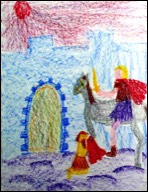
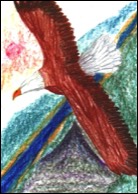
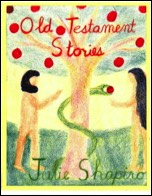
-
Viewing the Grades 1-4 Galleries: A Video Guide
-
Grade 1 Galleries
-
Form DrawingForm Drawing is one of the core subjects of first five grades in the Waldorf school setting. As the child gains mastery over the deceptively simple polarity of straight and curved lines, her eye gains mastery over her hand. Students grow confident in their relationship to space and laterality, which in turn supports subjects as varied as reading and writing, geometry and gymnastics. It is important to realize that all of these drawings are created freehand by 6-7 year-olds.

Click here to view the Gallery. -
Writing & Reading: Fairy TalesThe Fairy Tale is at once the basis of the first grader’s introduction to literature and to writing. Elements from fairy tales allow the child to see the metamorphosis of an object or being into a letter of the alphabet. Along with Form Drawing, this approach makes writing a joyful process of discovery.

Click here to view the Gallery. -
ArithmeticThe world of number is brought to first graders through rhythmic games and recitation, as well as narratives in which the Four Operations are personified. This multifaceted approach brings arithmetic to life.

Click here to view the Gallery.
-
-
Grade 2 Galleries
-
Form DrawingThe Second Grader continues work with straight and curved lines, symmetry, circles, and running forms. New elements that are introduced this year include a greater emphasis on the horizontal plane, the ability to work with the interplay of the straight and the curved line, forms that metamorphose, and more challenging geometrical constructions.

Click here to view the Gallery. -
Language Arts: Saints & FablesTwo types of stories are told to the Second Grader. Stories of Saints and “Legends of Good People” speak to one side of the 8 year-old, while the mischievous and clever creatures who populate the stories in Aesop’s Fables speak to quite another side. Second graders are learning how to write and read lower case letters, and they will also receive their first readers this year.

Click here to view the Gallery. -
ArithmeticThe first part of Second Grade is devoted to consolidating the children’s skills in counting, reciting times tables, and doing simple computations with single-digit numbers. The rest of Grade Two is spent learning about place value, identifying numbers into the ten thousands, and understanding the basics of carrying and borrowing.

Click here to view the Gallery.
-
-
Grade 3 Galleries
-
Form Drawing“Mirroring Drawings,” so important in Grades One and Two, take on a new significance in Grade Three. For the first time, students “cross” the line that separates right from left and create forms in which they are developing symmetries in two directions at once. Third graders also work with a greater variety of metamorphoses and more demanding geometrical constructions.

Click here to view the Gallery. -
Stories from the Hebrew ScripturesThe Hebrew Scriptures, rarely taught outside of parochial schools, are of the utmost importance in the Waldorf curriculum. They speak powerfully to the changes experienced by the child between the ages of 9 and 10, and they provide a foundation for the archetypes, themes, plots, and aphorisms that pervade literature in the Western world.

Click here to view the Gallery. -
MeasurementAbraham was given the task of demarcating the land that would belong to the Israelites, while Joseph’s understanding of volumetric measurement helped him know how to store seven years’ worth of grain. Third graders learn to tell (analog) time, measure length and volume, and understand weight. As they move about the school campus, rulers in hand, the third graders are a joyful group.

Click here to view the Gallery. -
Farming & GardeningThe “9-10 year-old change” brings in its tow a reorientation of the child, who now grows deeply interested in the physical world. Long before environmental concerns became popular in primary education Waldorf schools understood the importance of the school garden. Waldorf schools generally arrange for a week-long trip to a working farm in which third graders can be immersed in a world that is tragically alien to many modern children.

Click here to view the Gallery. -
Shelters & HousebuildingTents and temples and the search for shelter are central themes in the Hebrew Scriptures, as is the Abrahamic notion of “hospitality.” So it is not surprising that the study of shelters and modern housebuilding are central themes in the Grade Three curriculum. Students learn about the way in which environmental factors and available materials led to the myriad shelters constructed throughout history, and participate in constructing a modest “house” of their own.
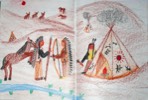
Click here to view the Gallery.
-
-
Grade 4 Galleries
-
Form DrawingForm Drawing takes a quantum leap forward in Grade Four. Having worked for the first time with lines that cross, the class now ventures into the complexities of “knotted” and “braided” forms. These arise out of the study of Norse myths, for the Norsemen and their descendants, the Langobardians, were masters at carving and forging elaborate knots in wood and metal. They also help the 10 year-old harmoniously weave the powerful forces of soul and body that are especially active at this time in his life. And, once again, don’t forget that all of these forms are freehand, drawn only with the eye and the hand.
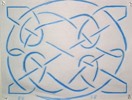
Click here to view the Gallery. -
Norse MythologyAfter the solemnity of the Hebrew Scriptures in Grade Three, the raucous and rambunctious tales of Norse gods and goddesses and giants and dwarves is a powerful change for the fourth grader. The strong personalities of the Norse heroes and the wild and stormy landscapes in which they pursue adventure go well with the liveliness of the animal world that fourth graders study in Zoology.

Click here to view the Gallery. -
Natural Science: ZoologyThe Waldorf school waits until Grade Four to introduce Natural Science as a formal subject. We begin with the kingdom of nature that is closest to the child — the animal world — and we are not only concerned with what children learn about animals, but also what they learn about themselves. Drawing the animals strengthens the fourth grader’s powers of observation and their recognition that a great deal may be learned abut the animal simply by watching them.

Click here to view the Gallery. -
World LanguagesDepending on the size of their school, Waldorf students study one or two world languages from Grade One through Grade Eight or Nine, when they focus on one language. In the primary grades, children learn the language orally, through games, songs, recitation, and conversation. In Grade Four they begin to write the language and study it in a more systematic way. These are examples from fourth grade French.
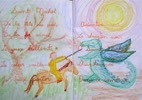
Click here to view the Gallery.
-
-
Science in the Waldorf Grade SchoolThis slideshow presents a rich survey of the natural sciences and laboratory sciences curriculum of Grades Four through Eight in the Waldorf school. Hyperlinks make it possible to experience the complex interweaving of the various subjects as the student moves from grade to grade. Eugene Schwartz’s insightful commentary points to the relationship of the sciences to every other aspect of the Waldorf student’s experience. NOTE: This presentation is very big — it contains over 175 slides, and many of those slides have several layers of imagery. For this reason it is available only as a downloadable PowerPoint file. Once you have downloaded it, it can be played on your computer’s PowerPoint software (if you have a PC), or it can be opened as a KeyNote slideshow (on a Mac). Some of the animations and transitions will not be fully functional in Keynote. Click here to download the PowerPoint Slideshow.

-
Go to the Grades 5-8 Student Work GalleriesClick here to visit our extensive galleries of work by Waldorf students in Grades Five through Eight.
Help Us Keep These Resources Free
Become a Member of MillennialChild.com. Members help provide the software and Internet services that make these valuable Waldorf resources available to tens of thousands of people annually — and keep MillennialChild.com free of advertising.
Annual Members receive a 30% discount on CD Downloads and one free phone consultation a year with Eugene Schwartz.
Click here for more information.
